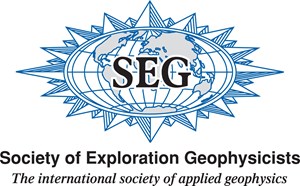
Source: Society of Exploration Geophysicists
SEG Publishes Special Section on Injection-Induced Earthquakes
Authors document effects of wastewater injection in central United States, hydraulic fracturing in Canada, and methods of monitoring and managing earthquake hazard.
TULSA, Okla., June 2, 2015 (GLOBE NEWSWIRE) -- Earthquake activity in parts of the central United States — particularly in central and north-central Oklahoma and south-central Kansas — has increased dramatically in recent years. A new set of papers published in The Leading Edge, a journal of the Society of Exploration Geophysicists (SEG), examines the correlation between this surge in seismic activity and the increase in large-volume wastewater disposal associated with oil and gas production. The papers are gathered in the June 2015 issue of The Leading Edge in a special section titled "Injection-induced seismicity" (http://library.seg.org/toc/leedff/34/6).
Highlights of the findings and observations published in the special section include the following:
- The increase in earthquakes in the U.S. midcontinent — especially in central and north-central Oklahoma and south-central Kansas — since 2009 is most likely caused by human activity, particularly injection of wastewater from oil and gas production into underground disposal wells.
- Although a small number of earthquakes globally have been attributable to hydraulic fracturing (fracking), the surge in earthquakes in the central United States appears most likely to be caused by wastewater injection, not fracking.
- The increased rate and occurrence of earthquakes near fault structures has raised the earthquake hazard in central Oklahoma and has increased the probability for a damaging earthquake.
- A comparison of wastewater injection and seismicity in Oklahoma and California confirms other studies that management of net injection volume can help to reduce the occurrence of injection-induced earthquakes.
Other papers in the section document earthquakes in California that might be related to oil and gas activities, seismicity triggered by hydraulic fracturing in Canada, induced seismicity in the Netherlands which resulted in curtailed production in parts of the Groening gas field, and the importance of modeling and monitoring to help understand the earthquake process and aid in hazard mitigation.
For access to The Leading Edge special section or to conduct interviews with subject-matter experts, contact:
Steve Brown, Media Relations
Society of Exploration Geophysicists
Email: sbrown@seg.org
Phone: 918.497.5503
About SEG
The Society of Exploration Geophysicists, the international society of applied geophysics, is a not-for-profit organization that promotes the science of geophysics and the education of applied geophysicists. SEG exists to connect, inspire, and propel the people and science of geophysics. SEG fulfills its mission through its publications, conferences, forums, educational opportunities, and multiple Web site resources. For more information, visit www.seg.org.